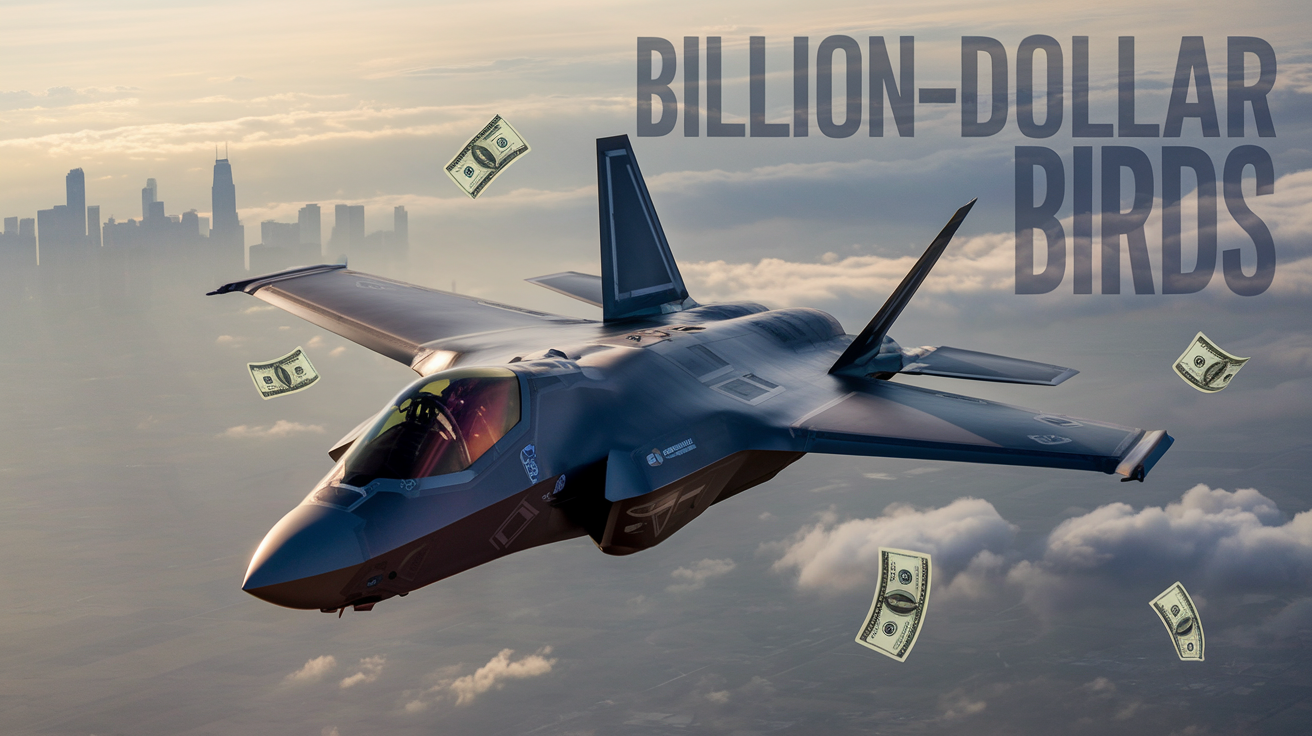Have you ever wondered how much a fighter jet really costs? Brace yourself, because the price tags on these aerial marvels will leave you utterly stunned. 💸✈️
The Staggering Price Tags of Modern Fighter Jets
Breaking down the billion-dollar costs
When it comes to modern fighter jets, the costs are truly astronomical. Let’s break down the expenses that contribute to these eye-watering price tags:
- Research and Development: 40-50% of total cost
- Manufacturing: 30-40% of total cost
- Maintenance and Support: 10-20% of total cost
- Training and Simulation: 5-10% of total cost
| Cost Component | Percentage of Total Cost | Example for a $100 million jet |
|---|---|---|
| R&D | 40-50% | $40-50 million |
| Manufacturing | 30-40% | $30-40 million |
| Maintenance | 10-20% | $10-20 million |
| Training | 5-10% | $5-10 million |
Comparing fighter jet prices to everyday items
To put the cost of fighter jets into perspective, let’s compare them to some everyday items:
- A single F-35 Lightning II ($80-100 million) could buy:
- 400-500 luxury homes
- 2,000-2,500 Tesla Model S cars
- 160-200 million Big Macs
This stark comparison highlights the immense financial resources dedicated to military aviation.
Factors driving the astronomical expenses
Several key factors contribute to the high costs of modern fighter jets:
- Advanced technology: Stealth capabilities, cutting-edge avionics, and sophisticated weapons systems
- Materials: Use of exotic, high-performance materials like titanium and carbon fiber composites
- Complex manufacturing processes: Precision engineering and assembly requirements
- Limited production runs: Spreading development costs over fewer units
- Ongoing upgrades: Continuous improvements to keep pace with evolving threats
These factors combine to make fighter jets some of the most expensive military assets in the world. As we explore the evolution of fighter jet costs, we’ll see how these expenses have changed over time.
Evolution of Fighter Jet Costs Over Time
Historical price trends since World War II
The cost of fighter jets has seen a dramatic increase since World War II. In the 1940s, a typical fighter aircraft like the P-51 Mustang cost around $50,000 (approximately $750,000 in today’s dollars). By the 1960s, the price had risen significantly, with the F-4 Phantom II costing about $2.4 million (around $21 million adjusted for inflation).
Here’s a comparison of fighter jet costs over time:
| Era | Fighter Jet | Original Cost | Adjusted Cost (2023) |
|---|---|---|---|
| 1940s | P-51 Mustang | $50,000 | $750,000 |
| 1960s | F-4 Phantom II | $2.4 million | $21 million |
| 1980s | F-16 Fighting Falcon | $14.6 million | $47 million |
| 2000s | F-22 Raptor | $150 million | $240 million |
Technological advancements and their impact on costs
The exponential rise in fighter jet costs can be attributed to significant technological advancements:
- Stealth technology
- Advanced avionics
- Sophisticated weapons systems
- Improved materials (e.g., composites)
- Enhanced propulsion systems
These innovations have dramatically increased the capabilities of modern fighter jets but have also contributed to their soaring costs.
The role of inflation in fighter jet pricing
While technological advancements play a crucial role, inflation also significantly impacts fighter jet pricing. The defense industry often experiences higher inflation rates than the general economy due to:
- Specialized materials and components
- Limited competition among suppliers
- Complex manufacturing processes
- Rigorous testing and quality control requirements
This “defense-specific inflation” compounds over time, further driving up the costs of fighter jets beyond what general inflation rates might suggest.
Top 5 Most Expensive Fighter Jets in the World
A. F-35 Lightning II: The trillion-dollar program
The F-35 Lightning II stands at the pinnacle of fighter jet costs, with a program price tag that has soared to an astounding $1.7 trillion over its lifetime. This fifth-generation multirole fighter, developed by Lockheed Martin, represents the epitome of modern air warfare technology, but at an unprecedented cost.
Key features contributing to its high price:
- Advanced stealth technology
- Sophisticated sensor fusion
- State-of-the-art avionics
- Vertical take-off and landing capability (F-35B variant)
B. F-22 Raptor: Stealth at a premium
The F-22 Raptor, another Lockheed Martin creation, holds the title of the most expensive fighter jet per unit, with each aircraft costing approximately $350 million. This air superiority fighter showcases unparalleled stealth capabilities and supercruise performance.
C. Eurofighter Typhoon: Europe’s costly defender
Developed by a consortium of European nations, the Eurofighter Typhoon comes with a hefty price tag of around $124 million per unit. This highly agile aircraft serves multiple air forces across Europe and beyond.
D. Sukhoi Su-57: Russia’s expensive answer
Russia’s entry into the fifth-generation fighter market, the Sukhoi Su-57, costs approximately $100 million per unit. While less expensive than its Western counterparts, it still represents a significant investment in advanced military technology.
E. Dassault Rafale: France’s pricey multirole fighter
Rounding out our top 5 is the French-made Dassault Rafale, with a unit cost of about $90 million. This versatile fighter has found success in both domestic and export markets.
| Fighter Jet | Approximate Cost per Unit |
|---|---|
| F-22 Raptor | $350 million |
| F-35 Lightning II | $80-$110 million (varies by variant) |
| Eurofighter Typhoon | $124 million |
| Sukhoi Su-57 | $100 million |
| Dassault Rafale | $90 million |
These astronomical costs reflect the cutting-edge technology, extensive research and development, and complex manufacturing processes involved in creating modern fighter jets. As we delve deeper into the subject, we’ll explore the hidden costs that contribute to these eye-watering price tags.
Hidden Costs Behind Fighter Jet Development
Research and development expenses
The hidden costs of fighter jet development begin with extensive research and development (R&D) expenses. These costs can be astronomical, often running into billions of dollars. R&D involves:
- Advanced materials research
- Propulsion system development
- Avionics and electronics design
- Stealth technology integration
Here’s a breakdown of typical R&D expenses for a modern fighter jet:
| R&D Component | Estimated Cost (in billions) |
|---|---|
| Airframe | $3 – $5 |
| Engine | $2 – $4 |
| Avionics | $4 – $6 |
| Stealth Tech | $3 – $5 |
| Testing | $2 – $3 |
Testing and certification processes
Once the initial design is complete, rigorous testing and certification processes ensue. These include:
- Wind tunnel testing
- Structural integrity tests
- Flight simulations
- Actual flight tests
- Weapons integration testing
These processes can take years and add significantly to the overall cost of fighter jet development.
Maintenance and operational costs
The expenses don’t stop once a fighter jet enters service. Ongoing maintenance and operational costs can exceed the initial purchase price over the aircraft’s lifetime. These include:
- Regular maintenance and repairs
- Fuel costs
- Spare parts
- Software updates
- Hangar and storage facilities
Pilot training and simulation expenses
Finally, the cost of training pilots to operate these advanced machines is substantial. Modern fighter jets require:
- Advanced flight simulators
- Specialized training programs
- Ongoing skill maintenance
These hidden costs contribute significantly to the overall expense of fighter jet development and operation, often surpassing the initial sticker price of the aircraft itself. As we move forward, it’s crucial to consider these factors when evaluating the true cost of military aviation technology.






